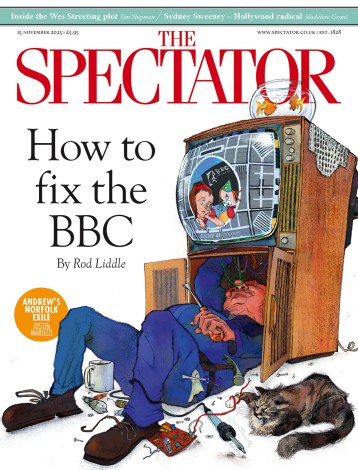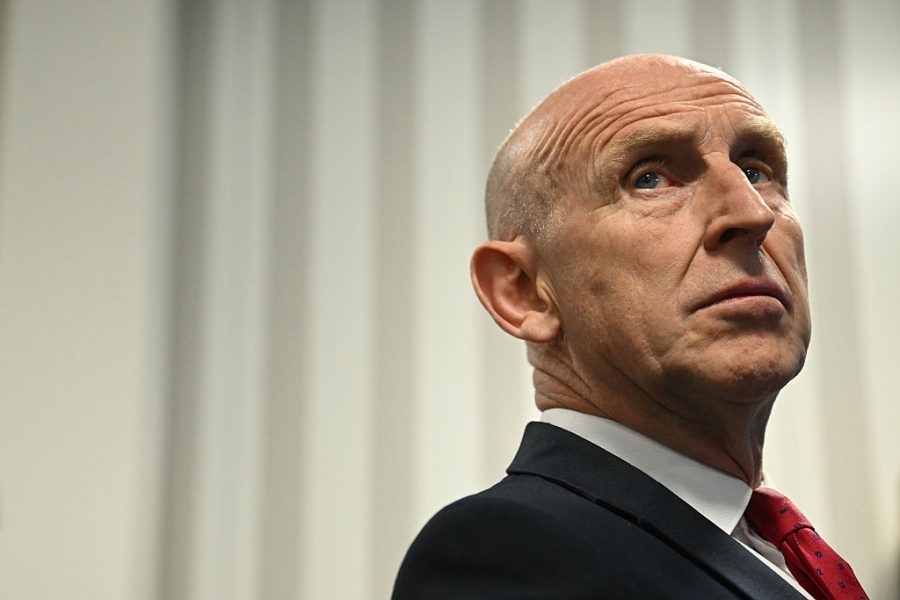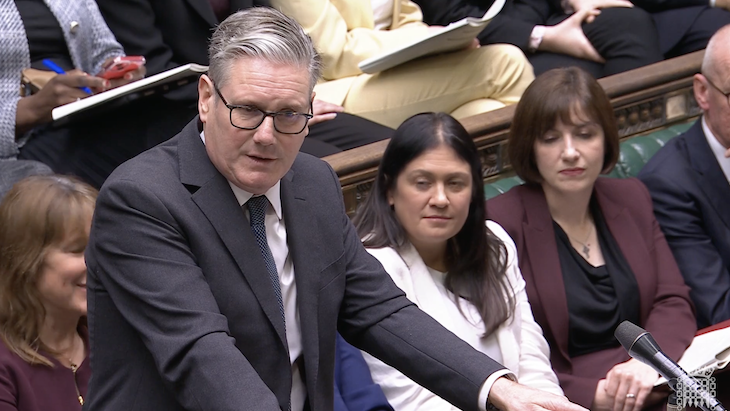The events of the last few days – the Trump/Putin summit in Anchorage, the visit of European leaders to the White House and the virtual conference of the ‘Coalition of the Willing’ – have felt strangely detached and surreal. It has been almost like the anxiety dream of a stressed European diplomat: full of famous faces and sententious words, none of it making much sense.
Even summing up the status quo is a challenge. Thanks to President Trump, we know that the idea of a ceasefire in Ukraine is now off the table and branded unnecessary. He has also said that the country will not be admitted to Nato, while his special envoy Steve Witkoff talked about a ‘land swap’ between Ukraine and Russia and ‘robust security guarantees that I would describe as game-changing’. President Putin has agreed to these guarantees, or perhaps he hasn’t.
We cannot wait and see, or allow troops to improvise
The White House at least agrees that a peace settlement cannot be made without involving Ukraine, but Secretary of State Marco Rubio warned that ‘you can’t have a peace deal between two warring factions unless both sides agree to give up something’. As we pass the 80th anniversary of imperial Japan’s unconditional surrender, one wonders what President Truman would have made of that assertion.
There will be a bilateral meeting between Presidents Putin and Zelenskyy at some unspecified point, or perhaps there won’t. Trump says Ukraine will have to resign itself to Russia’s possession of Crimea, while Zelensky says there is no possibility of giving up its territorial rights. Most strikingly, there will be a ‘reassurance force’ deployed to Ukraine. President Trump explained:
We’ve got the European nations and they’ll front-load it and they’ll have, some of them – France, Germany, UK – they want to have boots on the ground. I don’t think it’s going to be a problem, to be honest with you.
A ‘reassurance force’ will require a ‘combat mandate’ but will not be responsible for enforcing a putative peace deal. The United States will not commit ground troops but it could provide support ‘by air’. However, Germany’s foreign minister, Johann Wadephul, has said that ‘stationing troops in Ukraine would probably be too much for us’, while the Kremlin has consistently said that the presence in Ukraine of troops from Nato countries is a red line.
Not all of these propositions can be true. They reveal the dangerous and worrying extent to which individual actors are fixating on what they would like to happen, as if that somehow reifies their hopes. This level of disconnectedness in a complex strategic and military situation is a breeding ground for costly mistakes.
Earlier this week, the defence secretary, John Healey, was giving the impression that a reassurance force was simply waiting for its command. He told the BBC last week:
We’re ready to put UK boots on the ground in Ukraine. They are ready to go, they’re ready to act from day one. The military plans are complete.
Is that true? Above everything else, have planners at the Ministry of Defence been persistent enough in asking the question that matters above all other: ‘And then what?’
The windy rhetoric of politicians has its purpose but when the armed forces are being committed to operations, they need more than vague intentions and broad-brush aims. They need detailed plans, objectives and rules of engagement.
Let us suppose, mirabile dictu, a peace agreement is somehow reached, and the Coalition of the Willing has managed to generate some kind of meaningful reassurance force of 15,000 or 20,000 soldiers. They are deployed on the Ukrainian side of an agreed border, while half a million Russian troops are on the other side.
Vladimir Putin, whom we know we cannot trust, pushes his luck: Russian soldiers ‘accidentally’ cross the agreed border into Ukrainian territory. The reassurance force warns them they must withdraw, but they refuse. And then what? Do British or French soldiers open fire on Russian units?
Refusing to withdraw, the Russians are reinforced and move further into Ukraine. They engage Ukrainian troops, and British personnel are injured or killed alongside them. And then what? If we are still not prepared to take military action, our presence is pointless and we have reassured no-one.
That means we must be prepared to take military action. Now we are facing the prospect of British infantry and armour engaging their Russian counterparts. Bullets, tank rounds, shells and missiles are fired. There will inevitably be casualties, and the reassurance force will be heavily outnumbered. Do they request American air support? Is Donald Trump willing to authorise air strikes on Russian army units?
Every one of these questions must already have been answered hypothetically before we could safely contemplate deploying troops to Ukraine. We cannot wait and see, or allow troops to improvise, when the outcome could be a full-scale kinetic war with Russia. Whatever happens must be the result of a clear, sober, considered decision.
Have these conversations happened in the Ministry of Defence and Downing Street? Have we actually thought this through? If only we could be sure.








Comments